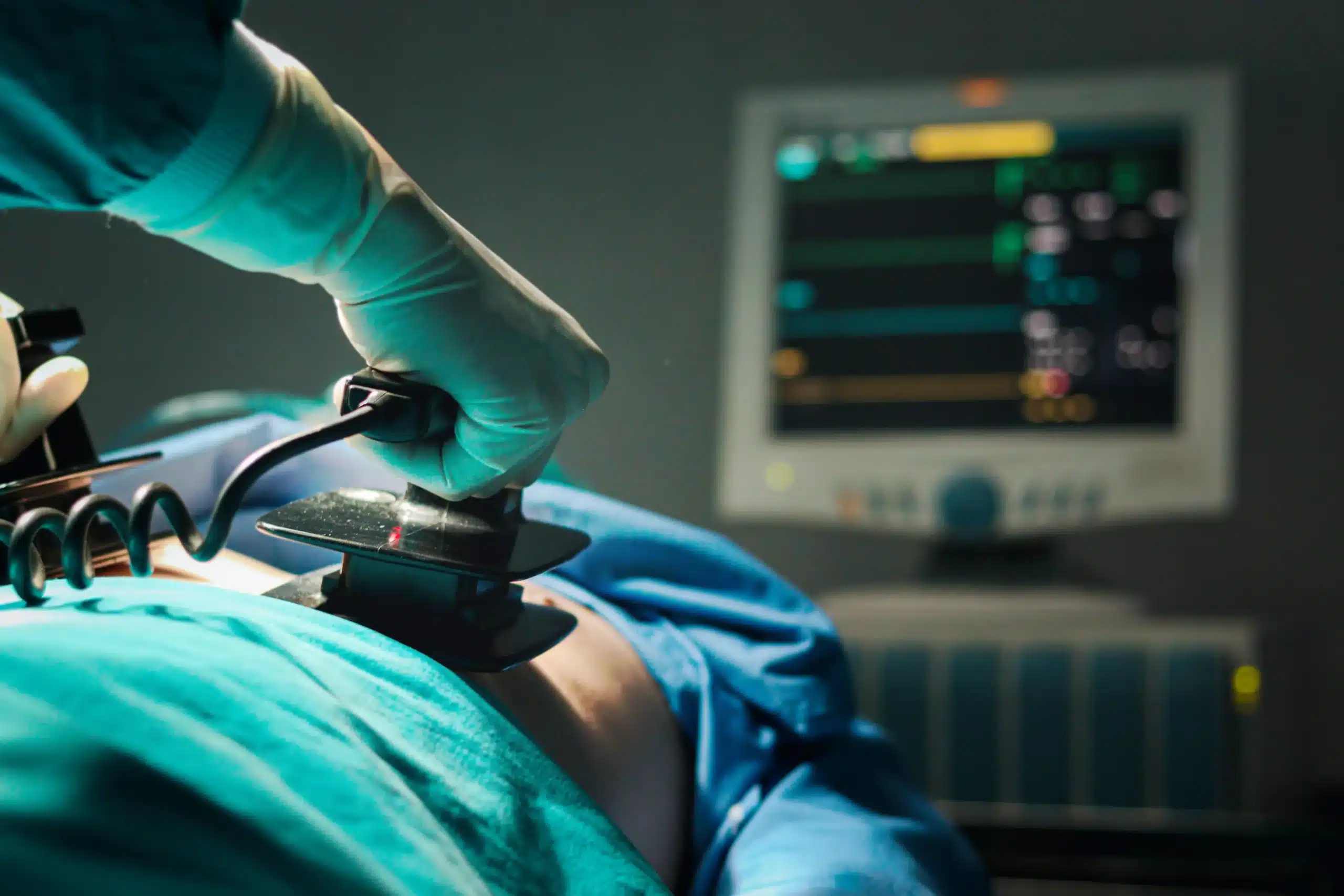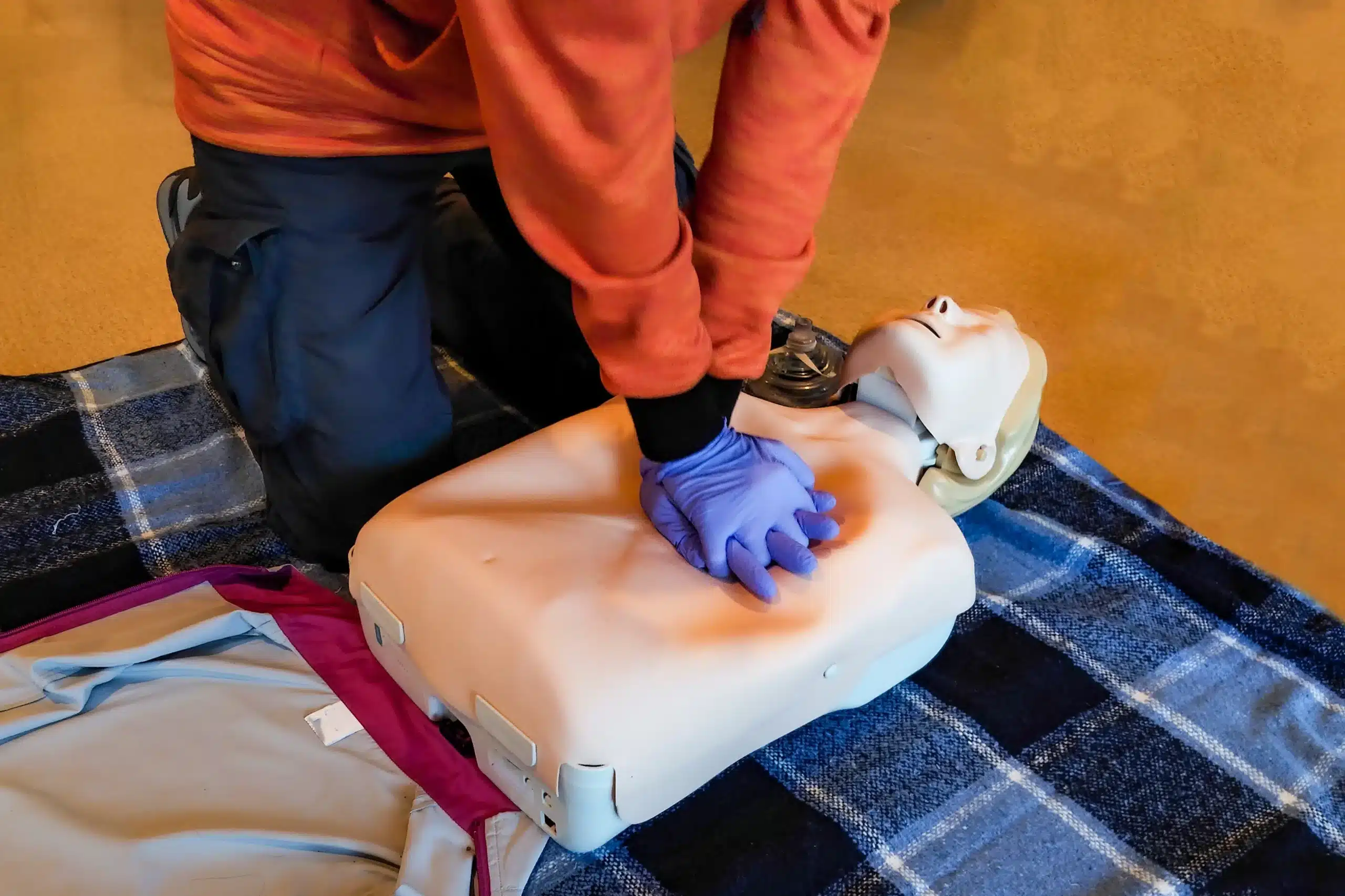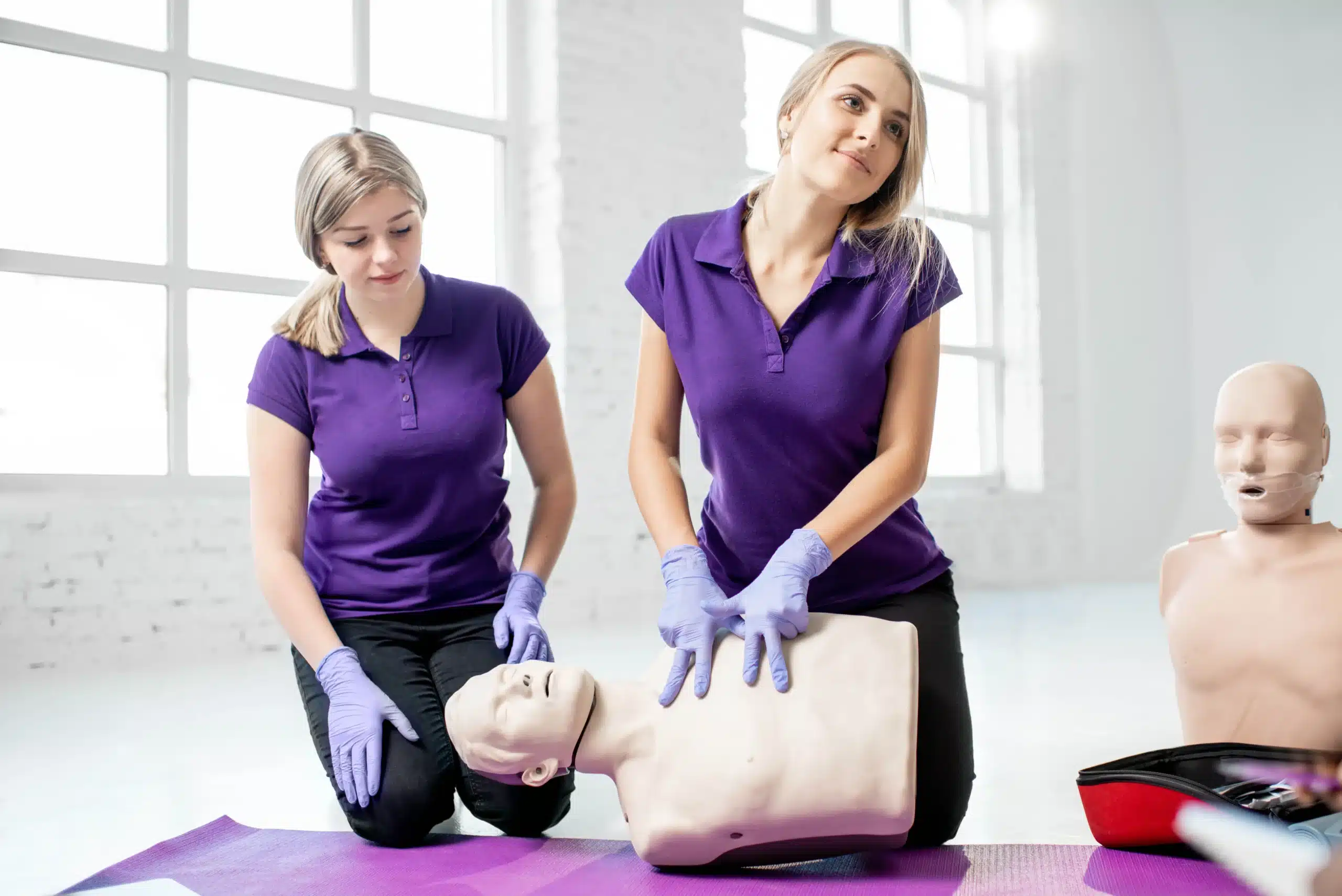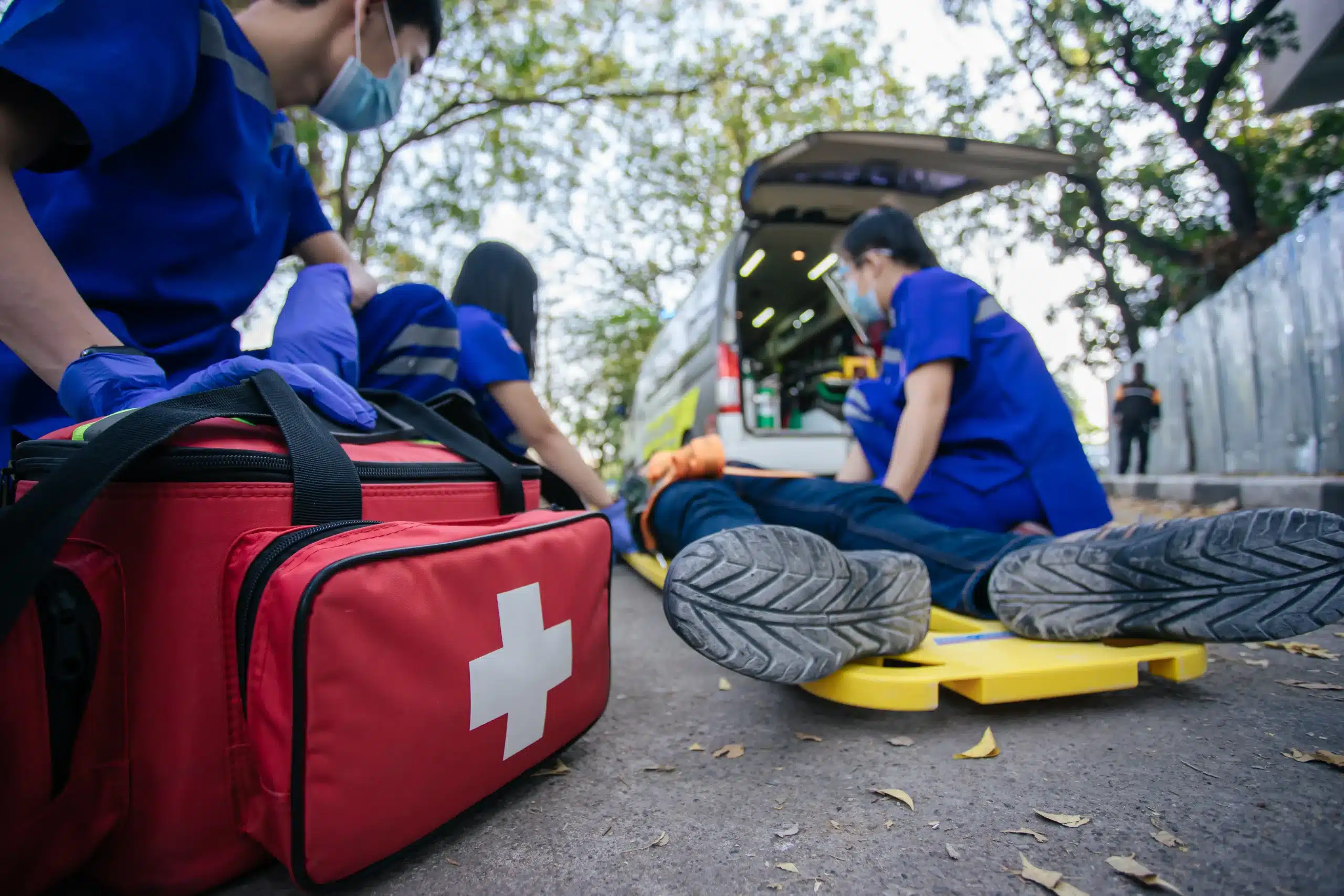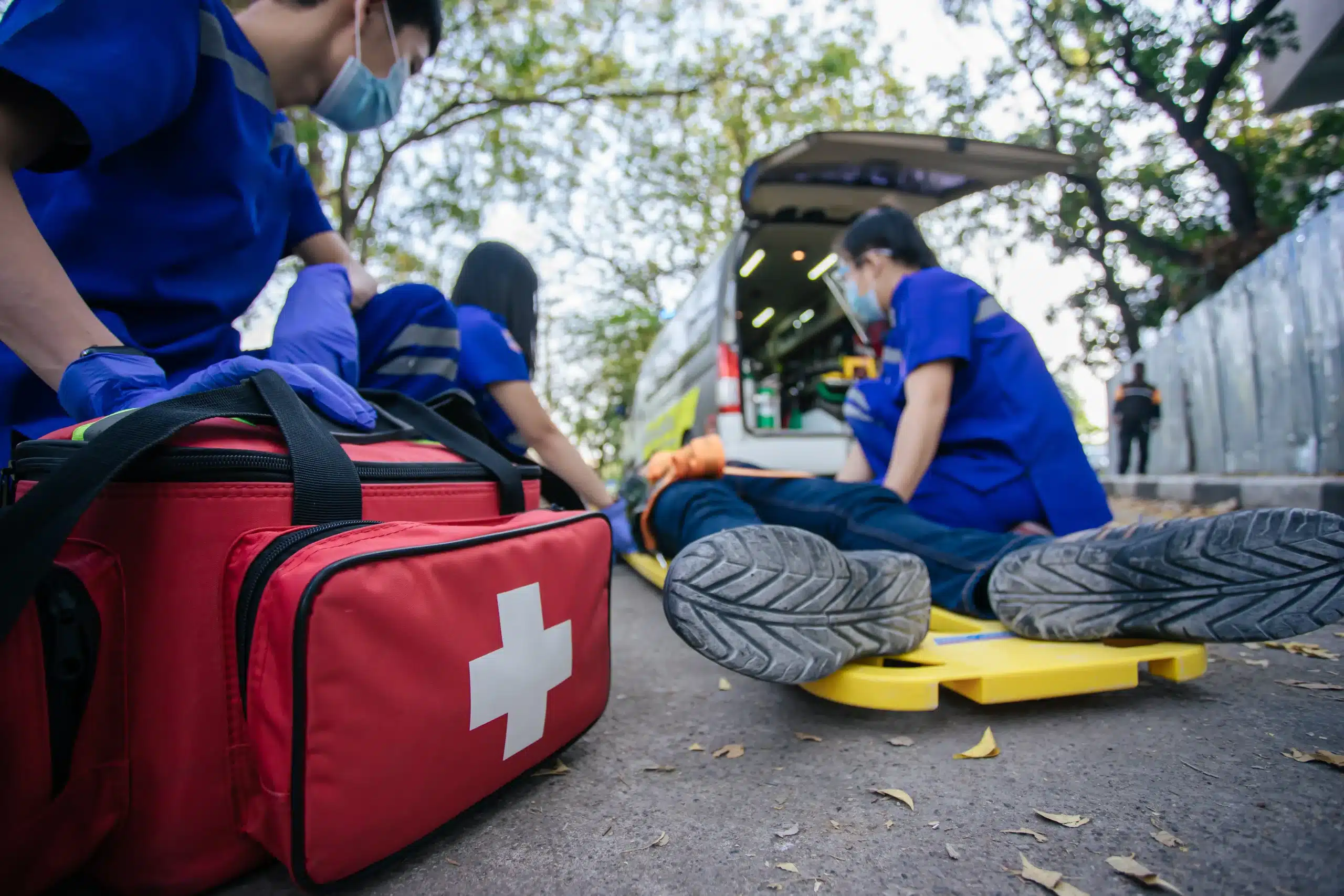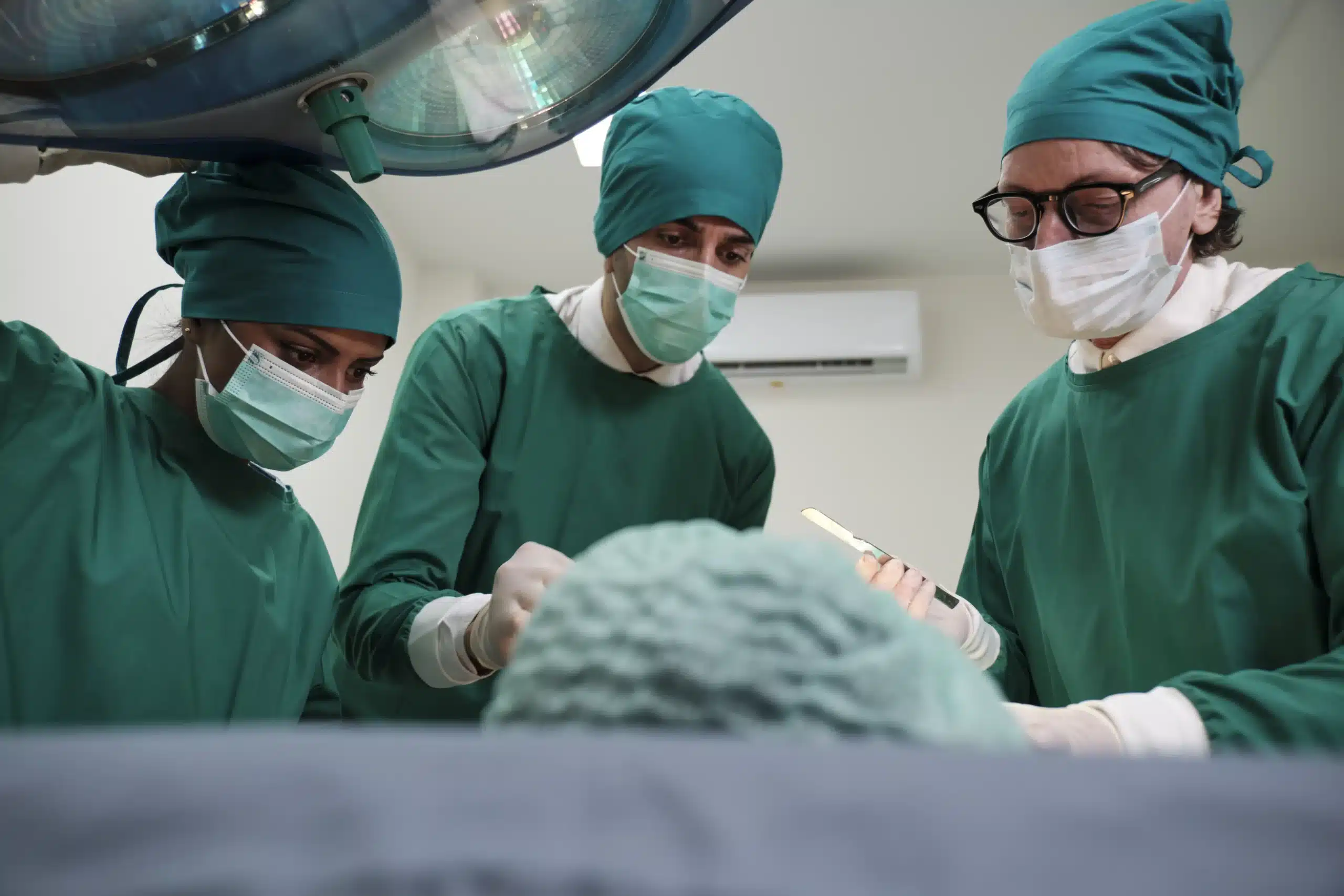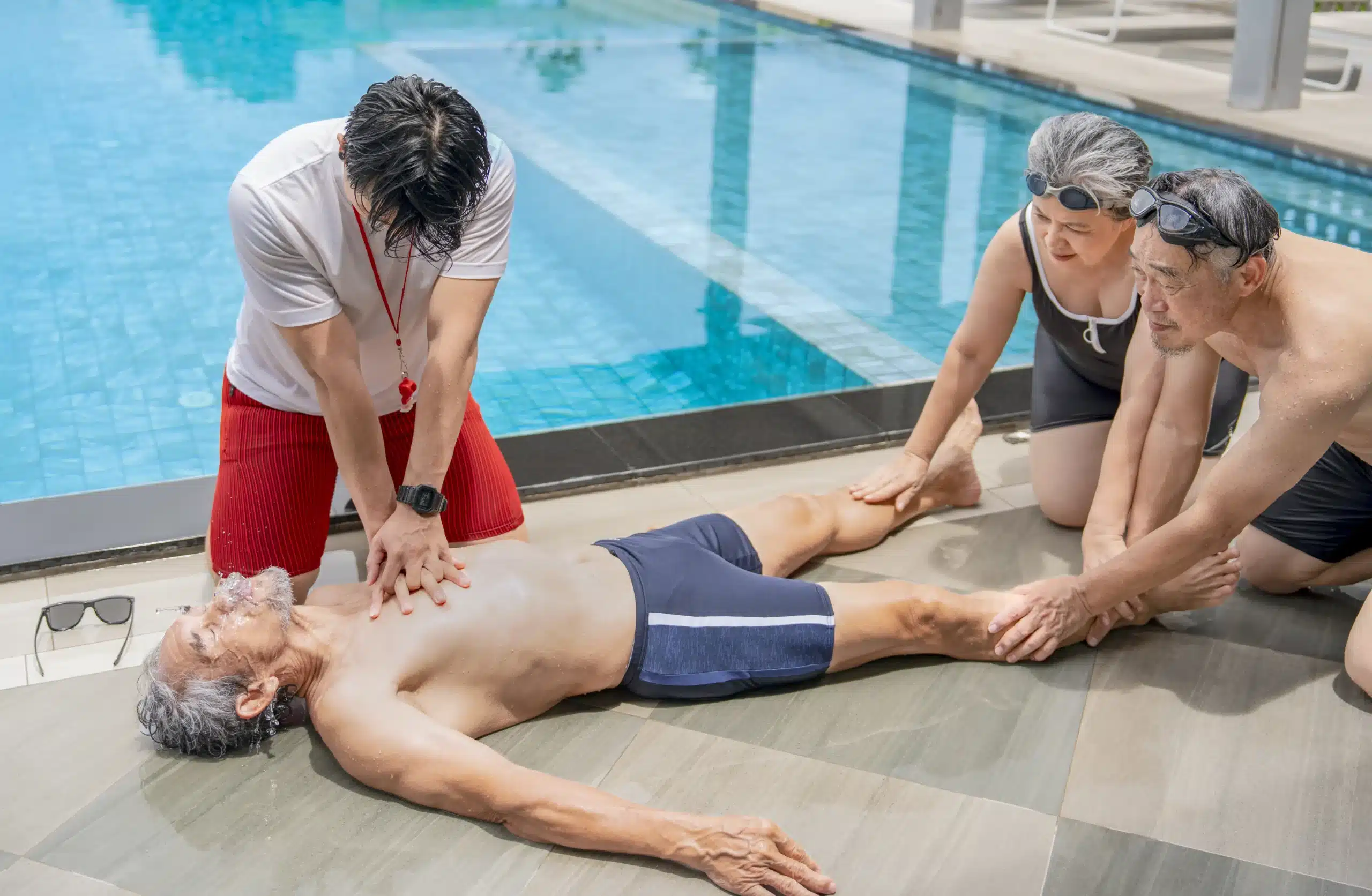Emergencies can happen anytime, anywhere. Being equipped with CPR skills can give you the confidence to respond effectively and potentially save a life. This guide provides a comprehensive overview of CPR training, from understanding the different course types and what to expect in a class to finding “CPR courses near me” and choosing the right training provider. We’ll also discuss the importance of maintaining your skills and staying informed on the latest guidelines. Whether you’re a healthcare professional, a caregiver, or a concerned citizen, this article will help you navigate the world of CPR training and find the perfect course to meet your needs.
Key Takeaways
- CPR empowers you to save lives: Learning CPR, whether BLS, ACLS, PALS, or a combined course, equips you to respond effectively during emergencies and potentially save a life.
- Choose the right training: Find a reputable provider with certified instructors, convenient schedules, and a format—online, in-person, or blended—that suits your learning style.
- Stay current with your skills: Regular practice and refresher courses are essential for maintaining proficiency and staying up-to-date on the latest CPR guidelines.
What is CPR? Why is it Important?
Cardiopulmonary resuscitation (CPR) is a lifesaving technique used in emergencies when someone’s breathing or heartbeat has stopped. This can happen after a heart attack, drowning, or other medical emergencies. CPR involves chest compressions and rescue breaths that circulate blood and oxygen to the brain and other vital organs. Learning CPR is a valuable life skill, significantly increasing the chances of survival for someone experiencing cardiac arrest.
CPR is critically important because it helps maintain blood flow and oxygen to the brain and other vital organs until professional medical help arrives. Bystander CPR can double or even triple survival rates. Think of it as a bridge, keeping someone alive until paramedics arrive with advanced medical equipment and expertise. Every second counts during a cardiac arrest, and knowing how to perform CPR can make all the difference. It empowers you to take immediate action in a crisis and potentially save a life.
CPR Course Types
Knowing which CPR course is right for you depends on your background and goals. Let’s break down some of the most common types of CPR training.
Basic Life Support (BLS)
Basic Life Support (BLS) provides foundational lifesaving skills for anyone in healthcare. This course covers core skills like recognizing life-threatening emergencies, performing high-quality CPR on adults, children, and infants, using an AED, and relieving choking. BLS certification is often a prerequisite for other advanced courses and is essential for many healthcare jobs.
Advanced Cardiac Life Support (ACLS)
Advanced Cardiac Life Support (ACLS) is designed for healthcare professionals who lead or participate in emergency cardiovascular care. Building on the fundamentals of BLS, ACLS training covers more complex situations like cardiac arrest, stroke, and acute coronary syndromes. It emphasizes teamwork, effective communication, and integrating BLS skills into advanced life-saving techniques.
Pediatric Advanced Life Support (PALS)
Pediatric Advanced Life Support (PALS) focuses on the specific needs of infants and children facing respiratory or cardiac emergencies. This course equips healthcare providers with the knowledge and skills to assess, treat, and stabilize young patients in critical situations. PALS emphasizes rapid assessment, effective interventions, and the unique physiological differences between children and adults.
First Aid & CPR Combo Courses
First Aid & CPR combo courses offer a practical way to learn essential lifesaving skills. These courses combine CPR training with first aid techniques for handling common injuries like cuts, burns, and fractures. A combo course is a great option for anyone wanting a well-rounded skill set, from parents and teachers to workplace safety officers and community members. It’s a convenient way to prepare for a range of emergencies.
Find Reputable CPR Training
Finding the right CPR training program is crucial for developing the skills and confidence to respond effectively in emergencies. Here’s what to consider when selecting a provider:
Check Certifications and Affiliations
Look for a training center offering courses certified by a nationally recognized organization like the American Heart Association (AHA). The AHA is a leader in CPR education and research, dedicated to improving cardiac arrest survival rates. AHA-certified courses ensure you’re learning the most up-to-date, evidence-based techniques.
Read Reviews and Testimonials
Check for reviews and testimonials from previous students. These firsthand accounts offer valuable insights into the quality of instruction, course materials, and overall learning experience. Positive reviews often highlight aspects of a program that might not be apparent in the course description.
Verify Instructor Qualifications
Verify the qualifications of the instructors. Reputable training providers employ certified instructors with extensive experience and a passion for teaching. Look for instructors certified by organizations like the AHA, demonstrating their commitment to maintaining high standards. Instructor qualifications are often listed on a training center’s website.
Explore Local & Mobile Options
Consider the location and format of the training. Choose a training center that’s conveniently located or offers mobile training options. This flexibility makes it easier to fit CPR training into your busy schedule. Many providers offer local CPR courses to meet diverse needs and schedules.
CPR Certification: Costs & Value
Getting CPR certified is an investment in yourself and your community. But like any investment, you’ll want to understand the costs involved. CPR certification costs vary based on several factors, and it’s helpful to know what influences pricing to find the best value.
Factors Affecting Course Prices
Several factors can influence CPR certification course costs. The type of course you take—Basic Life Support (BLS), Advanced Cardiac Life Support (ACLS), or Pediatric Advanced Life Support (PALS)—plays a significant role. More specialized courses like ACLS and PALS tend to be more expensive than BLS. The course format also matters. In-person training often costs more than online courses due to facility overhead and instructor fees. However, some providers, like Santa Clara CPR Classes, offer a Low Price Guarantee to ensure competitive pricing. Finally, your location can also affect pricing, with courses in metropolitan areas sometimes costing more. For those in the Santa Clara area, Santa Clara CPR classes offers courses in nearby cities like Milpitas and San Jose.
Average Prices by Course Type
While prices can change, understanding the general range can help you budget. A basic two-hour CPR and AED course typically averages around $35 per person. Group discounts are often available, potentially lowering the cost to around $280 for a group of eight. More advanced certifications like ACLS and PALS usually range from $100 to $200. It’s always a good idea to contact training providers directly to get accurate pricing. Reach out to Santa Clara CPR Classes for their current pricing and course schedule. They can give you the most up-to-date information for your specific needs.
Discounts and Promotions
Many training centers offer discounts and promotions, so it’s worth asking about them. Discounts might be available for students, seniors, military personnel, or groups. Some providers also offer discounts for registering early or bundling courses. Keep an eye out for seasonal promotions or special offers. Santa Clara CPR Classes frequently has promotions, so checking their website or contacting them is a good first step. Finding a high-quality, affordable course is definitely possible with a little research.
Online vs. In-Person CPR Training
Deciding between online and in-person CPR training depends on your needs and learning style. Both have advantages, so let’s break down the pros and cons to help you choose.
Online Training: Pros & Cons
Online CPR training offers flexibility. You learn at your own pace, fitting the coursework around your schedule. This makes online learning convenient for busy professionals, parents, or anyone who prefers self-directed study. Reputable organizations like the Red Cross offer online CPR certification. However, online courses typically don’t include hands-on skill demonstrations. While online CPR certification is often accepted, some employers or volunteer organizations may require in-person training. Always check requirements before choosing an online course.
Benefits of Hands-On Practice
In-person training provides crucial hands-on practice for mastering CPR techniques. You’ll learn in a controlled environment with a certified instructor who provides immediate feedback. This builds confidence and competence, allowing you to react effectively in an emergency. In-person and blended learning courses often meet professional licensing and OSHA requirements. The American Heart Association BLS course offered by Santa Clara CPR Classes covers essential techniques and best practices for healthcare settings. This prepares you for the demands of a healthcare environment.
Blended Learning Options
Blended learning combines online coursework with in-person skills sessions. You complete online modules at your own speed and then attend a hands-on session. This format offers flexibility while still providing essential practical experience. Blended learning is a great option for those who want a comprehensive learning experience. Providers like Safety Training Seminars offer both traditional and blended learning formats for BLS courses. This approach lets you tailor training to your learning preferences and schedule.
What to Expect in a CPR Class
So, you’ve decided to take a CPR class—fantastic! Knowing what to expect can help you feel prepared and confident on the day of your training. Here’s a glimpse into a typical CPR class experience:
Course Structure and Duration
CPR courses are designed to be comprehensive and engaging, blending lectures, demonstrations, and hands-on practice. Santa Clara CPR Classes offers various courses, from basic life support for community members to advanced certifications for healthcare providers. Whether you’re a parent, teacher, or medical professional, you’ll find options to suit your needs. With daily classes, finding a convenient time is easy.
Skills You’ll Learn
In a CPR class, you’ll learn the essential skills to respond to cardiac emergencies. The BLS course covers techniques like chest compressions, rescue breaths, and how to use an AED. You’ll also learn to recognize the signs of a heart attack and stroke, and the appropriate steps to take in various emergencies. Instructors emphasize best practices for providing care, especially in healthcare settings. Plus, you’ll receive your certification the same day you complete the class.
Certification & Renewal
After successfully completing your CPR and first-aid course, you’ll receive an official certification card. This card is valid for two years and is provided by recognized organizations like the American Heart Association. Santa Clara CPR Classes offers a range of AHA courses, including CPR, BLS, ACLS, and PALS. Staying current with your CPR certification is essential for providing effective care, so remember that renewal courses are readily available.
Choose the Right CPR Course
Knowing which CPR course best suits your needs helps you prepare for a medical emergency. Whether you’re a healthcare provider, a parent, or an employee, understanding your specific requirements is key to selecting the right training. Let’s break down the best options for different situations.
For Healthcare Professionals
Healthcare professionals, such as doctors, nurses, and EMTs, need specialized training to handle emergencies in medical settings. BLS certification from the American Heart Association is often a minimum requirement. This course covers core life-saving skills, including CPR, using an AED, and relieving choking. Additional certifications like ACLS (Advanced Cardiac Life Support) or PALS (Pediatric Advanced Life Support) might be necessary depending on your specific role and responsibilities. These advanced courses address more complex scenarios and patient care. Santa Clara CPR Classes offers all of these courses, ensuring healthcare workers can find the right training to meet their professional needs.
For Parents and Caregivers
For parents, grandparents, babysitters, and other caregivers, knowing CPR can be crucial for protecting the children in their care. While full healthcare professional certification isn’t always required, a basic CPR and First Aid course is invaluable. These courses equip caregivers with the skills to respond to common childhood emergencies, such as choking, near-drowning, and other injuries. Look for family-friendly CPR courses designed specifically for parents and caregivers. These classes often offer a more relaxed learning environment and focus on the most relevant skills for caring for infants and children.
Workplace CPR Training
Many workplaces encourage or require employees to have CPR and First Aid training. This is especially important in environments where accidents are more likely, such as construction sites, factories, or gyms. Group training sessions can be a cost-effective way for businesses to certify their staff. Check with your employer to see if they offer on-site training or if they partner with a local provider like Santa Clara CPR Classes to offer discounted rates. Having trained employees not only creates a safer work environment but also empowers individuals to respond confidently during emergencies. CPR and First Aid training can be a valuable asset to any workplace.
Prepare for Your CPR Class
Getting ready for your CPR class involves a little prep work—mentally and physically—and gathering the right resources. Knowing what to expect ahead of time helps you walk into class feeling confident and ready to learn these lifesaving skills.
Materials and Equipment
Most CPR classes provide the necessary training equipment, including manikins for practice. Santa Clara CPR Classes follows American Heart Association (AHA) guidelines, ensuring you’ll learn with up-to-date materials and training protocols. It’s always a good idea to double-check with your chosen provider if you need to bring anything specific, but generally, you’ll just need to show up ready to learn.
Pre-Course Study Resources
While pre-course study isn’t always mandatory, familiarizing yourself with basic CPR principles can give you a head start. Explore CPR training providers and compare course content. Some providers offer online resources or study guides you can review before class, which can help you absorb the information more effectively during hands-on training. Consider your learning style and whether accessing pre-course materials would be beneficial for you.
Physical and Mental Prep
CPR training involves physical activity, primarily chest compressions and rescue breaths. Wear comfortable clothing that allows for a full range of motion. Santa Clara CPR Classes offers flexible scheduling, so choose a class time that aligns with your schedule and energy levels. Mentally preparing yourself is just as important. Understand that learning CPR can be intense, but it’s also incredibly empowering. Come prepared to participate actively and ask questions. A positive attitude and a willingness to learn will make your CPR training experience more valuable.
Maintain Your CPR Skills
CPR isn’t a learn-it-and-forget-it skill. Regular practice and staying informed on the latest guidelines are crucial for providing effective, life-saving care when needed.
The Importance of Practice
Hundreds of thousands of cardiac arrests occur each year. Bystander CPR can significantly increase someone’s chances of survival, but your skills can diminish over time. Regular practice keeps your techniques sharp and your confidence high. Think of it like any other skill—the more you practice, the better you become. Set aside time to review the steps and rehearse the motions, so you’re always prepared. You can practice on a CPR manikin or even visualize the steps to reinforce your training.
Refresher Courses & Updates
Even if you’ve taken a CPR course, refresher training is essential. Regular review helps maintain proficiency, and resources like printable guides can help refresh your skills. Consider taking a refresher course every year or two to stay current with the latest techniques and guidelines. These courses reinforce your knowledge and introduce any updates to CPR procedures. Staying current ensures you’re prepared to handle emergencies effectively.
Stay Informed on CPR Guidelines
CPR guidelines can change as medical knowledge evolves. Staying informed about these updates is critical for delivering the most effective care. Organizations like the American Heart Association and the Red Cross regularly publish updated guidelines. Make it a habit to check for updates periodically. CPR training providers often incorporate the latest guidelines into their courses, ensuring you receive top-notch instruction based on current best practices. Staying informed demonstrates your commitment to providing high-quality CPR and can make all the difference in a real-life emergency.
Top CPR Training Providers
Finding the right CPR training provider is a crucial step in becoming certified. Several reputable organizations offer high-quality CPR courses that meet national standards. Here are a few leading providers to consider:
American Heart Association
The American Heart Association (AHA) is a globally recognized leader in CPR education and research. They offer a wide range of courses, from basic CPR for the community to advanced training for healthcare providers. AHA courses are known for their rigorous standards and emphasis on evidence-based practices. Find an AHA course near you through their website, CPRverify.
American Red Cross
The American Red Cross is another well-respected provider of CPR training. They offer various courses designed for different needs, including workplace training, community classes, and online options. Red Cross certifications are widely accepted and trusted. Explore their CPR training options to find a course that fits your schedule and learning style.
National Safety Council
The National Safety Council (NSC) provides comprehensive safety training programs, including CPR and first aid certification courses. They offer both in-person and online learning options, making it convenient to get certified. Learn more about the National Safety Council and their training programs.
American Safety & Health Institute
The American Safety & Health Institute (ASHI) offers various CPR and first aid courses designed for individuals and workplaces. Their programs focus on practical skills and real-world scenarios. Visit the ASHI website to explore their course offerings and find a training center near you.
ProTrainings
ProTrainings specializes in online CPR and first aid training, providing a flexible and affordable way to get certified. Their online courses are self-paced, allowing you to learn at your own speed. Check out ProTrainings for more information on their online certification programs.
Santa Clara CPR Classes
For those in the Santa Clara, Milpitas, and San Jose area, Santa Clara CPR Classes offers a comprehensive range of American Heart Association (AHA) courses. They provide convenient schedules, experienced instructors, and a commitment to excellent customer service. Learn more about their CPR training programs.
Related Articles
- Why CPR is Important in Healthcare – Santa Clara CPR Classes
- CPR Renewal in San Jose: Your Complete Guide – Santa Clara CPR Classes
- CPR Certification in San Jose: A Complete Guide
- Online CPR Classes in San Jose: Your Certification Guide – Santa Clara CPR Classes
- HeartCode BLS Santa Clara: Your Flexible CPR Training Guide – Santa Clara CPR Classes
Frequently Asked Questions
What’s the difference between BLS and CPR?
CPR (Cardiopulmonary Resuscitation) is the core hands-on technique used when someone’s heart stops beating. BLS (Basic Life Support) is a broader term encompassing CPR, along with other essential skills like using an AED (Automated External Defibrillator) and relieving choking. Think of CPR as one piece of the BLS puzzle. BLS certification is often required for healthcare providers and other professionals.
How long does CPR certification last, and how do I renew it?
CPR certification typically lasts for two years. Renewal involves taking a refresher course before your current certification expires. This ensures your skills and knowledge are up-to-date. Contact your certifying organization or a local training provider like Santa Clara CPR Classes for information on renewal courses.
What if I’m not comfortable performing rescue breaths?
If you’re hesitant about performing rescue breaths, “hands-only CPR” is an effective alternative. This involves continuous chest compressions until professional help arrives. While rescue breaths are ideal, hands-only CPR still significantly increases the chances of survival. Any CPR is better than no CPR.
Is online CPR certification accepted?
While online CPR certification offers convenience and flexibility, acceptance can vary. Some employers and organizations may require in-person training with a hands-on skills assessment. Always check the specific requirements of your workplace or organization before opting for online certification.
How do I choose the right CPR class for me?
Choosing the right CPR class depends on your individual needs. Consider your background, whether you’re a healthcare professional, a parent, or seeking general knowledge. Think about your learning style and whether you prefer online, in-person, or blended learning. Research different training providers and compare course content, cost, and schedule to find the best fit. If you’re in the Santa Clara area, Santa Clara CPR Classes offers a variety of courses to meet diverse needs.
